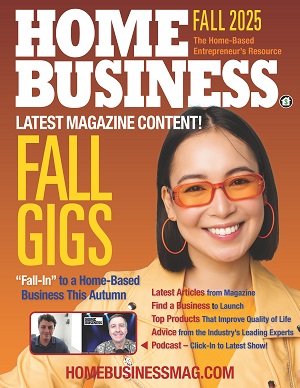The sports world and the business world have a great deal in common. Rarely is this more apparent than in one of the most famous quotes uttered by anyone, athlete or otherwise.
“I skate to where the puck is going to be, not where it has been,” hockey great Wayne Gretzky said.
Gretzky’s quote gets at one of the most fundamental truths of entrepreneurial success: Winners tend to get there — as in, to a potentially world-changing or at least very profitable idea — before everyone else.
There are limits to how far you can take this advice, of course. Sometimes in entrepreneurship, winners aren’t first. They’re second, third or even fifth, benefiting along the way from earlier adopters’ work (and mistakes).
But let’s agree that it’s usually better to be early to adopt and commercialize an idea than late. Wait too long and the opportunity may evaporate, or the world may simply move on.
If that’s the case, how can we ensure we don’t miss our mark? That we stake just far enough past the puck to be ready when it comes, but not so far that someone else intercepts it?
Seasoned entrepreneurs have some things to say about that. Listen up.
Make Something That’s Already Useful Even Better
You don’t have to reinvent the wheel to create something that makes the world a better place.
Some of the most successful “new” products build on existing foundations. When entrepreneurs like EarthLink founder Sky Dayton began commercializing WiFi in the early 2000s, they tapped into an existing (and increasingly popular) platform: the Internet. WiFi was all about making Internet access easier, faster, and just better all around.
Being early still matters for this type of innovation. As marketing expert Dan Oshinsky notes, innovations like WiFi often spur a rush of “fast followers” that can quickly reduce the size of the pie slices available to the next wave of adopters.
Understand What Drives Adoption
As a young computer engineer, Microsoft cofounder and future billionaire Bill Gates had an all-encompassing mission: Build a personal computer software platform that was easy enough for ordinary people to use — not just geeks like him.
“I was willing to focus my life, in my 20s, just on software, just on the one job,” Gates recalled.
Gates understood that it wasn’t enough to have an elegant program with a technically impressive source code. Most people don’t care about that stuff. They just want something that works.
That’s a lesson that applies in pretty much every corner of the tech world.
Be Willing to Iterate Quickly
OpenAI is worth approximately $300 billion today, making it one of the world’s most valuable private companies, according to Bloomberg. Most people only started hearing about it in 2022 or so, after ChatGPT burst onto the scene, but OpenAI had been around for quite a while before then, working on the foundations of its powerful models.
Those foundations changed over time as OpenAI unlocked innovations that improved its large language models (and advanced that technology overall). The “secret sauce” to its success wasn’t magic (despite its models’ output sometimes feeling magical) but a willingness to iterate quickly and fail fast.
Don’t Take “No” For an Answer
Another of the world’s most valuable companies is also quite young by corporate standards. Tesla has been around for 20 years yet has a market capitalization of around $1 trillion. It is also so closely associated with American innovation that most forget it nearly didn’t survive its first decade.
Few people gave Tesla a chance in the late 2000s and early 2010s, as it perfected its electric drivetrain and began scaling up production. Electric cars were seen as a curiosity at best and more likely a distraction from “real” automotive innovation. Incumbent automakers, importantly, dismissed the threat. But Tesla kept pushing, eventually proving the doubters wrong. Its position as the dominant Western EV maker now speaks for itself.
Make It About the Mission
Most companies grow by solving problems better than their competitors. However, unlocking that next level of success may require something more: a mission to change the world.
Tesla rode its own mission — to make mobility and energy production more sustainable — to dizzying heights. OpenAI, too, embraced its mission to build human-capable (and better) AI aligned with human aspiration, rather than oppositional to it. In OpenAI’s case, that mission manifested in a hybrid nonprofit structure that allowed it to enjoy the best aspects of nonprofit and for-profit operation.
“This hybrid structure was ingenious — it allowed OpenAI to attract significant investment while maintaining the appearance of its mission-driven focus,” says AI business expert Takafumi Endo.
Some say OpenAI has outgrown or forgotten its mission, but it probably wouldn’t be here without first taking that approach.
Find the Next Big Thing
These approaches will help you take advantage of the next big thing, whatever it happens to be. They’ll also make you better at sussing out ideas or technologies that really could change the game for your current or future customers — and maybe even change the world.
Of course, reading about what’s worked for entrepreneurs like Sky Dayton, Bill Gates and Elon Musk only gets you so far. Lots of people have ideas and many know what it takes to act on them, but few end up putting all the pieces together. Execution matters, and that’s a (long) story for another time.
Find a Home-Based Business to Start-Up >>> Hundreds of Business Listings.

















































